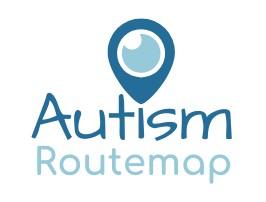5 things you may not know about neurodivergent communication

Difference. The age-old factor that causes fallouts at home, in our communities and on world stages. Men versus women, heterosexuals versus homosexuals, children versus adults, black versus white, protestants versus catholic and neurotypical versus neurodiverse – to name but a few.
It seems that we like what we know. Familiarity makes us feel comfortable and safe. We cling to it like a child clasping their favourite snuggly toy. And when we encounter someone who differs from our perception of “normal”, we feel uncertain. They aren’t like us and so we’re quick to judge … often unfavourably.
Have you ever tried to convince a toddler to eat a new vegetable? Your enthusiasm was quite possibly met with absolute refusal. Mouth clamped firmly shut. As far as they are concerned, that vegetable represents a very real threat to their existence!
When you think about it, we are not so very different to toddlers who won’t give new food the benefit of the doubt. We show the same qualities when, we as adults, don’t accept people who don't fit our version of “normal”.
So how do we begin to embrace people who are not like us? It’s simple really. We make the unfamiliar familiar. If you keep offering that toddler the same vegetable over and over again, they will eventually give it a try. After a while, it won’t look nearly so scary.
Change happens in increments. Women in the early 1900’s held rallies and fought for their right to vote until the idea no longer seemed like an absurdity. People of different sexual orientation have done the same. They have protested and presented their cases in court. Consequently, we no longer consider it a crime to be gay or lesbian. The unfamiliar is now familiar.
Neurodiverse people have long occupied the territory of the unfamiliar. Because they don’t represent the majority of people in a community, their needs have been ignored. But globalisation has connected people all over the world. And collectively, minority voices become loud enough for everyone to hear.
So, in the interests of further making the unknown known, this post continues the discussion of communication differences which can cause misunderstandings between autistic and neurotypical people.
The last blog post discussed how a structured, sequential thinking style (which is typical of many autistic people), can be a huge strength in certain settings but conversely, a weakness in everyday conversation.
Another aspect of “thinking style” which is common to many autistic people, is strong visual processing skills. As with structured sequential thinking, this too has significant benefits which may be pronounced in autistic thinkers. In fact, research shows that autistic people often outperform their neurotypical counterparts on aspects of cognitive functioning, such as attention to detail, pattern recognition and visual puzzles.
These strong visual processing skills make for very competent employees in jobs such as Engineering, Art, IT and Finance. There is, however, a flip side to the coin which is that autistic people often show weaker auditory processing skills. And this can adversely affect the quality of conversations.
Conversation relies heavily on auditory processing. We access some visual information through facial expression, eye contact and body language but we can’t see spoken words. They must be heard.
So, what are the implications of weaker auditory processing skills in everyday conversation?
#1 Listening challenges
Less proficient auditory processing means that listening skills may be an area of weakness for the autistic person. Poor listening often leaves the communication partner feeling unheard or disregarded.
#2 Misreading tone of voice
Tone of voice can completely change the meaning of a sentence. Placing the emphasis on either one of the three words in the sentence, “I hate bananas” (go on …. give it a try) will change the implications of the message. Autistic thinkers can be prone to these interpretation errors which can lead to misunderstandings.
#3 Difficulty with background noise
Weaker auditory processing will also affect the person’s ability to hear in the presence of competing noise. Trying to have a conversation with the television on or in a restaurant may well be very challenging for the autistic person. A date night at your favourite restaurant may end up as a frustrating experience for you both.
#4 Increased processing time
Weaker auditory processing may also mean that the autistic person needs more time to process spoken information. Without realising this need, the neurotypical person may assume that their conversation partner isn’t listening or interested. They may also find the slower pace of conversation frustrating.
#5 Challenges in group situations.
Group conversations increase the processing demands dramatically. Now instead of tracking one conversation, you are processing dissimilar communication styles – each one coming from a different location and with discrepant voice quality, facial expressions, and gestures. It becomes much harder to follow the conversation or work out when it is your turn to contribute. One lady described to me how she stays quiet on the outside but inside, she is screaming with desire to say something.
So where does that leave us?
Different neurological wiring characterised by structured sequential thinking and weaker auditory processing means that autistic people are often working very hard to stay afloat during conversations.
Communication may be different but if you put aside judgement and take the time to look below the surface, you just might find a wonderful person. Someone who could surprise you with their refreshing and unique outlook on life. A valuable employee with an extraordinary contribution to make. I don’t know about you, but the many months of lockdown due to COVID have left me craving a dose of diversity.
If you found this interesting, tune in next week for some strategies on managing the communication challenges that have been discussed in the last two posts.
Til then,
Linda Philips
MSc. Human Communication
Autism Routemap supports autistic and neurodivergent people with coaching and training to improve communication, interaction, and emotional regulation skills. Interested in knowing how we can help?
Contact [email protected] or book a free Turning Point call here.

